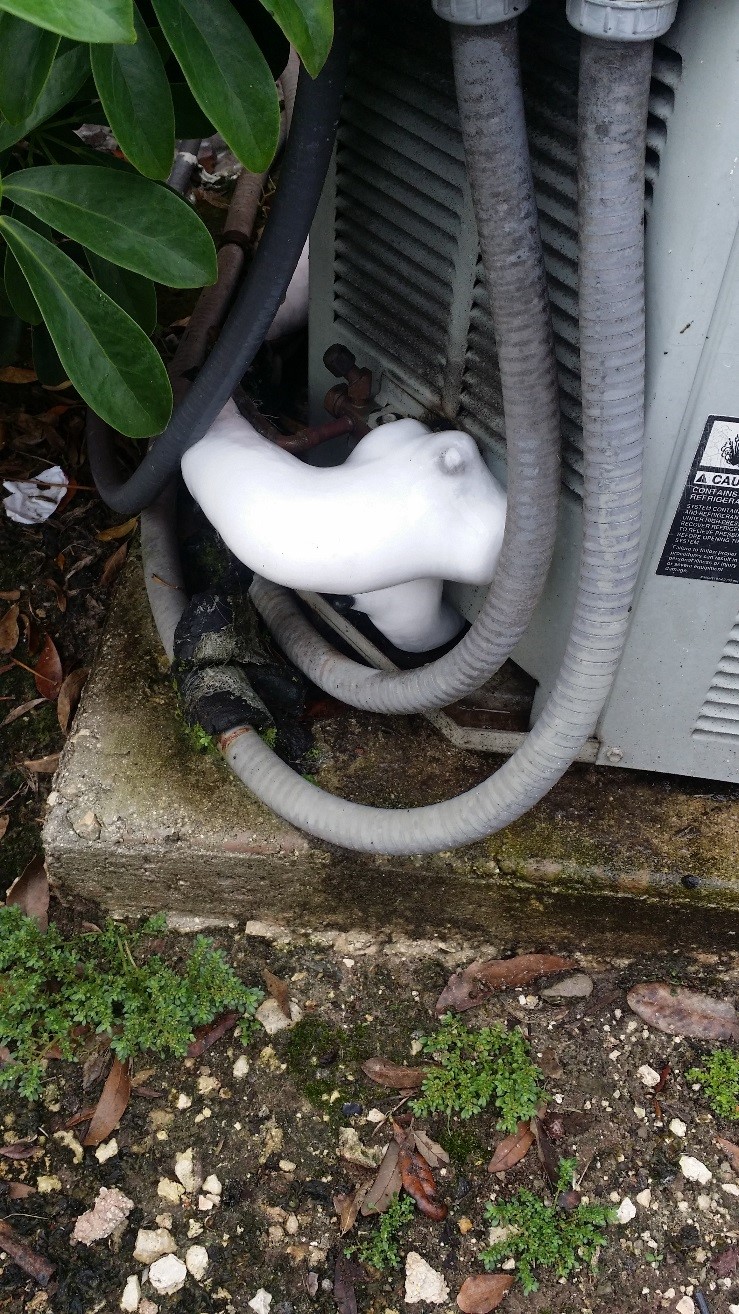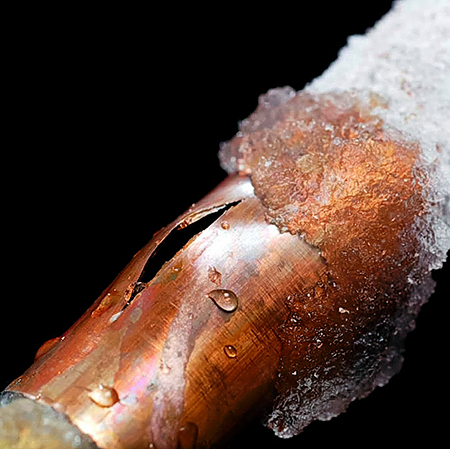My AC Pipe Is Frozen - What Should I Do? Instructions for Residents
My AC Pipe Is Frozen - What Should I Do? Instructions for Residents
Blog Article
This great article down below pertaining to Have a Frozen AC Line? Here’s How to Fix It is unquestionably interesting. Don't skip it.

Intro
Discovering that your air conditioner pipe is frozen can be concerning, particularly during hot summer months when you rely on your a/c one of the most. Recognizing what to do in such a circumstance is essential to prevent further damages to your air conditioning system and ensure your convenience indoors.
Comprehending the Causes
A number of elements can contribute to the cold of an air conditioning pipeline. Understanding these causes can help you deal with the problem successfully.
Lack of Airflow
One usual source of an icy AC pipeline is inadequate air flow. When the air movement over the evaporator coil is restricted, it can trigger the coil to go down below freezing temperature level, leading to ice formation on the pipe.
Low Refrigerant Levels
Inadequate cooling agent degrees in your AC system can also result in an icy pipeline. Low refrigerant degrees can cause the stress in the system to go down, causing the freezing of moisture on the evaporator coil.
Winter Conditions
In cooler climates, freezing temperatures outside can add to the cold of AC pipes. If your air conditioner device is not effectively shielded or if there are leaks in the ductwork, cold air can penetrate the system, triggering the pipeline to ice up.
Dirty Air Filters
Filthy or clogged up air filters can limit airflow in your air conditioning system, bring about numerous concerns, consisting of a frozen pipeline. It's vital to change or clean your air filters regularly to make certain appropriate airflow and protect against ice accumulation.
Signs of a Frozen A/c Pipe
Recognizing the signs of a frozen air conditioning pipe is vital for punctual activity.
Lowered Airflow
If you see a substantial decline in air movement from your vents, it can show an icy pipeline.
Ice Buildup on the Pipe
Visible ice buildup on the refrigerant line or the evaporator coil is a clear indication of an icy a/c pipe.
Strange Sounds from the Unit
Uncommon audios, such as hissing or bubbling, coming from your air conditioner system can signal that there's ice existing on the pipe.
Immediate Actions to Take
When faced with an icy air conditioner pipeline, it's necessary to act swiftly to stop further damage to your cooling system.
Turning off the air conditioner
The first step is to switch off your a/c unit to avoid the system from running and aggravating the issue.
Looking for Blockages
Check the area around the interior unit for any type of obstructions that might be obstructing airflow, such as furnishings or drapes.
Defrosting the Pipe
You can use gentle approaches like positioning towels taken in cozy water around the frozen pipe to help thaw it slowly.
Preventive Measures
Taking preventive measures can assist prevent future incidents of an icy a/c pipeline.
When DIY Methods Fail
If your attempts to thaw the pipe or address other issues are unsuccessful, it's time to hire a professional.
Importance of Hiring a Professional HVAC Technician
A certified HVAC technician has the knowledge and tools essential to identify and repair issues with your air conditioner system safely and effectively.
Normal Maintenance Checks
Arrange regular upkeep talk to a professional HVAC service technician to guarantee that your air conditioner system is running effectively.
Transforming Air Filters
Frequently change or clean your air filters to avoid airflow limitations and keep optimum performance.
Protecting Exposed Pipes
If your air conditioner pipes are subjected to chilly temperature levels, consider protecting them to avoid cold throughout cold weather.
Looking For Professional Help
If DIY techniques fall short to fix the problem or if you're not sure concerning just how to continue, it's finest to look for help from a certified HVAC service technician.
Final thought
Dealing with an icy air conditioning pipeline can be a discouraging experience, but recognizing just how to respond can assist lessen damages and bring back convenience to your home. By comprehending the causes, acknowledging the signs, and taking prompt activity, you can properly attend to the problem and avoid future events.
Frozen AC Line: Why It Happens & What To Do About It
A frozen AC line can be a rather peculiar sight in a place like Phoenix, Arizona where nothing ever freezes. In this post, we’ll discuss what makes an air conditioner line frozen – and what you can do about it.
Dirty Air Filters
Did you know that you should be cleaning or replacing your air filters on a monthly basis? Failing to do this can result in airflow issues that, in turn, cause your evaporator coils and lines to freeze over. You’ll notice a buildup of ice on both components, although the buildup on your pipes will, of course, be more evident unless you open your air condition up to reveal the coils.
What To Do About It
Give your air filter a good cleaning if it’s reusable. If not, replace the filter outright. Next, switch your air conditioner’s fan setting on and leave it there for 2-3 hours. This will draw warm air in, helping to thaw your evaporator coil. You can also check out this article for some tips on cleaning the coils themselves if you’d like to speed the process up. Before you switch the unit back to its normal state, make sure the supply vents are completely unobstructed and free of dust or other debris.
If you keep having this issue even after replacing your filters regularly, contact a local HVAC repair company and have them inspect your evaporator coil, ductwork, and any other components that may be at fault. If you live in the Phoenix, Arizona area, give American Home Water and Air a call.
Low Refrigerant Levels/Leakage
What To Do About It
Contrary to what air conditioner “recharge” companies often tell their clients about refrigerant, it should never need to be simply refilled. You see, refrigerant runs in what experts refer to as a “closed loop.” Refrigerant really shouldn’t be leaving that loop. If it is, you’ve got a leak.
Paying someone to come and pump more refrigerant into your system (aka “recharge” it) isn’t the solution. Doing that will simply kick the can down the road. Besides, refrigerant leaks can be harmful to the environment and people in your home.
Rather, you need to take care of the leak with the help of a technician. Check out this article for some more information about dealing with air conditioners that are leaking refrigerant. Before you contact a technician, switch your thermostat to the off position. Then, switch the fan setting on and let it run for 2-3 hours so the unit can thaw.
Improper Temperature Setting
Improper temperature settings can also cause a drop in your air conditioner’s pressure. What many people don’t realize is that air conditioners are actually designed to run when temperatures have fallen above roughly 60 degrees Fahrenheit. If you run the unit when it’s cold outside, you’ll run into many issues, including frozen components.

As a devoted person who reads on Have a Frozen AC Line? Here’s How to Fix It, I think sharing that piece of content was sensible. You should set aside a second to distribute this article if you liked it. We appreciate reading our article about Why Is Ice On My Outside Air Conditione.
Website Report this page